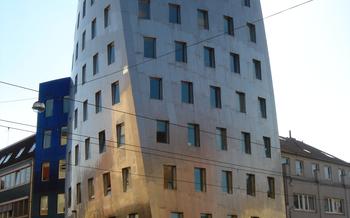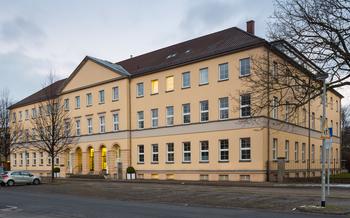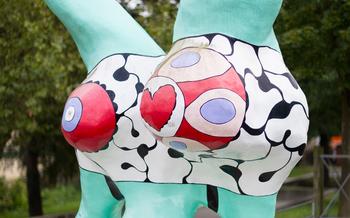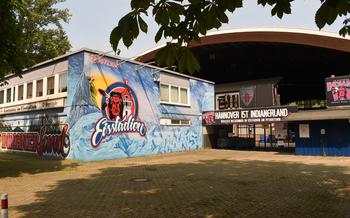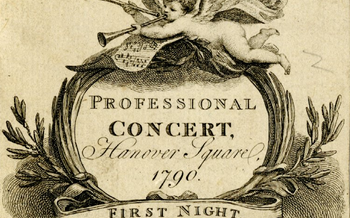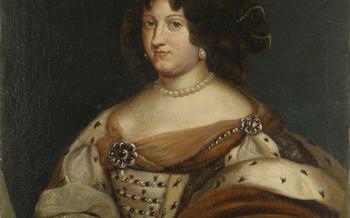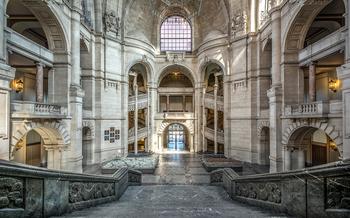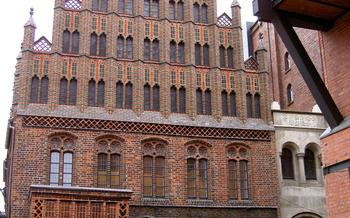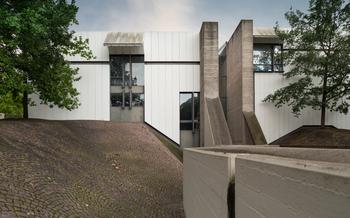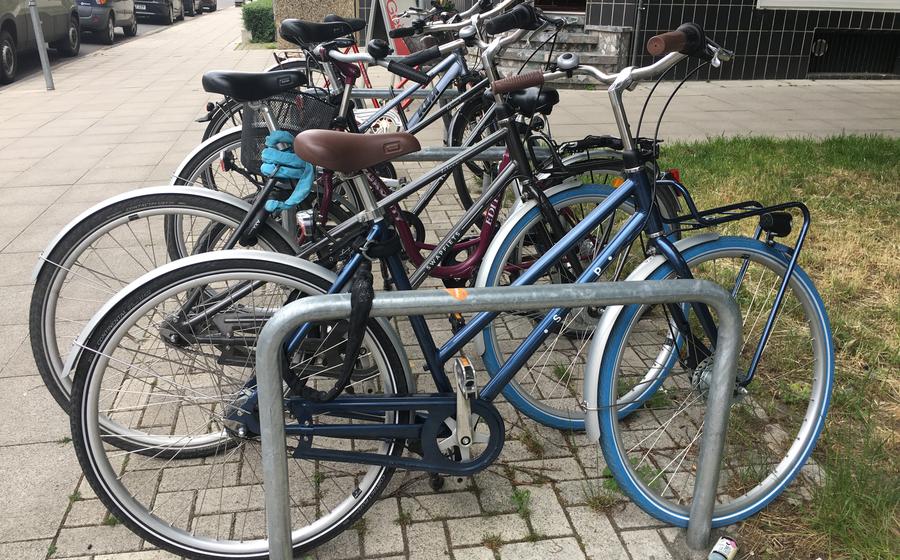
Blindenmuseum Hannover
- Orientation and Background
- Navigating the Museum
- Permanent and Temporary Exhibitions
- History of Blindness and Visual Impairment
- Assistive Technology and Innovation
- Art and Culture by and for the Blind
- Guided Tours and Workshops
- Accessibility and Inclusivity
- Reflecting on Personal Experiences
- Educational Programs and Outreach
- Partnerships and Collaborations
- Accessibility and Transportation
- Hours of Operation and Admission Fees
- Nearby Attractions and Points of Interest
- Insider Tip: Maximizing Your Visit
Orientation and Background
The Blindenmuseum Hannover, or the Museum for the Blind in Hanover, Germany, stands as a testament to the rich history and ongoing struggles of the visually impaired community. Established in 1989, the museum's mission is to raise awareness about blindness, challenge societal perceptions, and promote inclusivity for individuals with visual impairments. Through its permanent and temporary exhibitions, educational programs, and cultural events, the museum offers a unique perspective on the experiences and achievements of the blind.
Located in the heart of Hanover's historic district, the Blindenmuseum is easily accessible by public transportation. The museum's proximity to other cultural attractions, such as the Neues Rathaus (New Town Hall) and the Markthalle (Market Hall), makes it an ideal destination for visitors interested in exploring the city's vibrant history and culture. Additionally, the museum's fully accessible design, including ramps, elevators, and Braille signage, ensures a welcoming and inclusive environment for all visitors.
Navigating the Museum
The Blindenmuseum Hannover's layout is thoughtfully designed to ensure a seamless and accessible experience for all visitors. The museum features various sections, each dedicated to a specific aspect of blindness and visual impairment. As you navigate through the exhibits, you'll find Braille signage and audio guides that provide detailed descriptions of the displays, allowing blind and visually impaired visitors to fully engage with the content. Additionally, the museum offers a wide range of educational resources, such as touch-sensitive exhibits and interactive models, that cater to different learning styles and preferences. Whether you're interested in learning about the history of assistive devices or exploring the latest advancements in visual impairment technology, the Blindenmuseum Hannover has something to offer every visitor.
Permanent and Temporary Exhibitions
The Blindenmuseum Hannover offers a diverse range of permanent and temporary exhibitions that explore various aspects of blindness and visual impairment. The permanent exhibition, titled "Seeing with Your Hands," takes visitors on a journey through the history of blindness, the development of Braille, and the assistive technologies that empower visually impaired individuals to live independently. Interactive displays and tactile exhibits allow visitors to experience firsthand the challenges faced by blind people and gain a deeper understanding of their unique perspectives.
Temporary exhibitions at the museum showcase the artistic talents of visually impaired artists, highlighting their creativity and resilience. These exhibitions feature paintings, sculptures, and other artworks that challenge conventional notions of art and offer a glimpse into the vibrant cultural expressions of the blind community. By showcasing the diverse perspectives and experiences of blind and visually impaired individuals, the Blindenmuseum Hannover promotes inclusivity and challenges societal stereotypes associated with blindness.
History of Blindness and Visual Impairment
Throughout history, blindness and visual impairment have been shrouded in misconceptions and stigma. The Blindenmuseum Hannover sheds light on the evolving attitudes towards blindness, from ancient beliefs to modern-day perspectives.
In ancient times, blindness was often associated with divine punishment or a curse. People with visual impairments were marginalized and excluded from society. The museum showcases artifacts and historical documents that illustrate these negative perceptions.
The Middle Ages brought some progress, as monasteries and charitable institutions began to provide support and education for the blind. However, it wasn't until the Enlightenment that significant changes occurred. Philosophers and educators like Diderot and Haüy advocated for the rights of the blind and promoted their education.
The 19th century marked a turning point with the invention of Braille, a revolutionary communication system for the blind. Developed by Louis Braille, himself blind from a young age, Braille enabled visually impaired people to read and write, opening up new possibilities for education and employment.
The Blindenmuseum Hannover delves into the fascinating history of Braille, showcasing original Braille documents and devices. Visitors can learn about the challenges faced by early Braille users and the impact this system has had on the lives of millions of blind people worldwide.
The museum also explores the experiences of blind individuals during periods of war and conflict, highlighting their resilience and contributions to society. From soldiers who lost their sight in battle to civilians affected by bombings and persecution, these stories offer a poignant reminder of the struggles faced by the visually impaired throughout history.
Assistive Technology and Innovation
The Blindenmuseum Hannover takes pride in showcasing a range of assistive devices and technologies that empower individuals with visual impairments to live independently. From simple magnifying glasses to advanced speech recognition software, the museum offers a glimpse into the world of assistive technology.
Visitors can explore exhibits demonstrating how these devices aid in navigation, communication, and daily living tasks. They can try out screen readers that convert digital text into speech, orientation and mobility devices that help with wayfinding, and specialized keyboards designed for individuals with low vision.
The museum also highlights the latest innovations and research in the field of visual impairment. Visitors can learn about ongoing projects developing artificial vision systems, innovative eye treatments, and assistive technologies that utilize artificial intelligence.
These exhibits not only educate visitors but also inspire hope and innovation within the blind community. By showcasing the power of technology, the Blindenmuseum Hannover encourages individuals to embrace their abilities and live fulfilling lives.
Art and Culture by and for the Blind
The Blindenmuseum Hannover celebrates the creative spirit of visually impaired artists, showcasing a collection of extraordinary artworks that challenge perceptions and inspire awe. From intricate paintings and sculptures to tactile installations and musical performances, the museum provides a platform for blind and visually impaired artists to share their unique perspectives and talents with the world. Visitors can explore thought-provoking exhibitions that showcase the artists' diverse range of styles and techniques, gaining a deeper appreciation for the power of artistic expression beyond the limitations of sight. The Blindenmuseum Hannover also hosts cultural events, workshops, and performances that bring together artists, performers, and visitors to create a vibrant and inclusive community that celebrates the richness and diversity of human creativity.
Guided Tours and Workshops
The Blindenmuseum Hannover offers guided tours specifically designed for visitors with visual impairments, allowing them to explore the museum's exhibits in a safe and supported environment. These tours are led by experienced guides who are trained to provide detailed descriptions of the artifacts and artworks, ensuring that every visitor has an enriching and inclusive experience.
Additionally, the museum organizes educational workshops and activities for all ages, providing a platform for hands-on learning and engagement with the topics of blindness, visual impairment, and accessibility. These workshops cover a wide range of topics, from Braille literacy to assistive technology, and are facilitated by experts in the field.
Participating in guided tours and workshops at the Blindenmuseum Hannover is an excellent way for visitors to gain a deeper understanding of the challenges and triumphs faced by individuals with visual impairments, while also fostering empathy and inclusivity within the community.
Accessibility and Inclusivity
The Blindenmuseum Hannover prioritizes accessibility and inclusivity to ensure that visitors of all abilities can fully enjoy the museum's offerings. The museum's commitment to universal design extends beyond physical accessibility to create an environment where everyone feels welcome and respected. Visitors with visual impairments can navigate the museum independently thanks to a range of assistive features. Braille signage guides visitors through the exhibits, while audio guides provide detailed descriptions of the displays. The museum also offers tactile models, allowing visitors to explore objects through touch. To enhance the experience for visitors with hearing impairments, the museum provides closed captioning for videos and incorporates sign language interpretation in its guided tours.
The Blindenmuseum Hannover's commitment to accessibility extends beyond its physical space. The museum actively works to challenge societal misconceptions about blindness and promote a more inclusive understanding of visual impairment. Through its exhibits, educational programs, and community outreach efforts, the museum fosters empathy and encourages visitors to question their own perceptions and attitudes towards blindness. By creating a welcoming and accessible environment, the Blindenmuseum Hannover empowers visitors of all abilities to engage with the museum's content and gain a deeper understanding of the experiences and perspectives of the blind and visually impaired community.
Reflecting on Personal Experiences
Anecdotes and Personal Stories
The Blindenmuseum Hannover is not just a place to learn about blindness and visual impairment. It is also a place where visitors can connect with the personal stories of blind and visually impaired individuals. Throughout the museum, you'll find anecdotes and personal stories that offer a glimpse into the lives of those who have experienced vision loss.
One such story is that of a young woman named Sarah. Sarah was born with retinitis pigmentosa, a degenerative eye condition that gradually led to her complete blindness. Despite her challenges, Sarah refused to let her disability define her. She went on to earn a university degree, become a successful businesswoman, and raise a family.
Sarah's story is just one of many that are shared at the Blindenmuseum Hannover. These stories offer a powerful reminder that blindness and visual impairment do not have to be limiting. They also encourage visitors to reflect on their own perceptions and attitudes towards blindness.
Empathy and Understanding
The Blindenmuseum Hannover is a unique and valuable resource for anyone who wants to learn more about blindness and visual impairment. By sharing the personal stories of blind and visually impaired individuals, the museum helps to create a more inclusive and understanding society.
Educational Programs and Outreach
The Blindenmuseum Hannover takes pride in its educational programs and outreach initiatives, aimed at fostering understanding and empathy towards blindness within the community. The museum offers a range of educational programs designed for schools, youth groups, and the general public. These programs cover various aspects of blindness, including history, culture, assistive technology, and personal experiences. Through interactive workshops, guided tours, and educational materials, the museum aims to raise awareness about the challenges and achievements of individuals with visual impairments.
The museum also actively engages in community outreach through collaborations with local organizations, advocacy groups, and schools. By organizing workshops, talks, and exhibitions in various community settings, the Blindenmuseum Hannover strives to promote inclusivity and break down barriers surrounding blindness. The museum's educational programs and outreach efforts play a crucial role in creating a more informed and empathetic society, fostering a greater understanding of the diverse experiences and perspectives of people with visual impairments.
Partnerships and Collaborations
The Blindenmuseum Hannover actively collaborates with a range of organizations working in the field of visual impairment. These partnerships play a crucial role in enhancing the museum's outreach, impact, and ability to serve the blind and visually impaired community.
One notable collaboration is with the German Federation of the Blind and Partially Sighted (DBSV). The DBSV is a leading advocacy organization representing the interests of blind and visually impaired people in Germany. The museum works closely with the DBSV to organize events, workshops, and awareness campaigns aimed at promoting inclusivity and understanding.
Another key partnership is with the Hanover School for the Blind. This collaboration involves developing educational programs and resources tailored to the needs of blind and visually impaired students. The museum provides opportunities for students to visit the museum, interact with the exhibits, and learn about the history and culture of blindness.
Through these partnerships, the Blindenmuseum Hannover fosters a supportive network and promotes a collaborative approach to addressing the challenges faced by the blind and visually impaired community. The museum serves as a platform for sharing knowledge, resources, and experiences, contributing to a more inclusive and equitable society.
Accessibility and Transportation
Reaching the Blindenmuseum Hannover is a breeze, thanks to its convenient location and accessible public transportation options. If you prefer to travel by train, the Hannover Hauptbahnhof (main train station) is just a short walk away, connecting you to regional and long-distance rail services. Once you arrive at the station, hop on the U-Bahn (metro) line 6 or 9 and get off at the "Steintor" stop. From there, it's a leisurely five-minute stroll to the museum.
For those arriving by car, there are several accessible parking spaces reserved for visitors with disabilities near the museum. These spaces are conveniently located to ensure easy access to the museum's entrance. Simply look for the designated blue signs to find these dedicated parking areas.
Hours of Operation and Admission Fees
The Blindenmuseum Hannover is open to the public from Tuesday to Sunday, from 10 am to 5 pm. It remains closed on Mondays and major holidays. Visitors are advised to check the museum's website for any special hours or closures before planning their visit.
Admission fees are as follows:
- Adults: 6 euros
- Children (6-18 years): 4 euros
- Students, seniors (65+ years), and individuals with disabilities: 5 euros
- Family ticket (2 adults and 2 children): 15 euros
The museum offers free admission to visually impaired and blind individuals, as well as their companions. Additionally, discounted group rates are available for groups of 10 or more visitors. It is recommended to purchase tickets online in advance to avoid queues, especially during peak tourist season.
Nearby Attractions and Points of Interest
A visit to the Blindenmuseum Hannover can be combined with other fascinating attractions in the city. After exploring the museum, take a leisurely stroll through the picturesque Herrenhäuser Gardens, renowned for their beautifully manicured lawns, sculptures, and fountains. Immerse yourself in the world of science and technology at the Deutsches Museum, where interactive exhibits bring scientific principles to life. For art enthusiasts, the Sprengel Museum showcases a diverse collection of modern and contemporary art, including works by Pablo Picasso and Niki de Saint Phalle.
To explore Hannover's rich history, visit the Markthalle, a vibrant indoor market hall dating back to the 19th century. Here, you'll find an array of local delicacies, fresh produce, and artisanal crafts. The nearby Old Town (Altstadt) boasts charming narrow streets, half-timbered houses, and historical landmarks, including the Marktkirche, a Gothic church with a distinctive red-brick façade.
For a unique perspective of the city, take a ride on the Hannover U-Bahn, a modern and efficient light rail system. The U-Bahn lines connect various parts of the city, including the Blindenmuseum Hannover, making it easy to explore Hannover's attractions and landmarks.
Insider Tip: Maximizing Your Visit
To make the most of your visit to the Blindenmuseum Hannover, consider booking a guided tour in advance. This will provide you with a deeper understanding of the museum's exhibits and the history of blindness. The museum also encourages visitors to take photographs of the exhibits, as flash photography is allowed in most areas. This allows you to capture your memories and share them with others.
